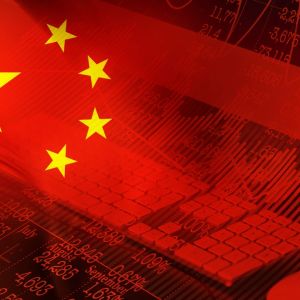Domestic price wars escalate Chinese economic deflation problems
3 min read
Chinese businesses, from coffee shops to electric-vehicle makers to property developers, are accused of rushing into markets and then slashing prices to stay afloat, a practice that has economists worried. A report by Natixis, mentioned by CNBC , examined 2,500 publicly traded firms in China. It found that while unit sales climb, falling price levels are undermining overall revenue, Alicia Garcia Herrero, the bank’s Asia-Pacific chief economist, said on Friday. “On the surface you’re dominating, but deep inside you’re paying a high price to dominate,” she said, warning that firms can’t generate enough revenue to carry on. Government figures indicate that over the first half of 2025, overall consumer prices eased by 0.1% year-on-year, while factory-gate rates dropped by 2.8%. Among the 48 manufacturing sectors tracked, only seven recorded increases, versus nearly half of the 37 consumer-goods categories. This fierce, often unproductive rivalry is known in China as “ involution .” Beijing has even used the term in policy papers, calling for steps to curb the trend. While this race has made tech gadgets and other products cheaper for many shoppers, it has also raised worries that endless price cuts could force companies to lay off staff. “With involution, the Chinese economy feels much colder than the headline growth suggests,” said Larry Hu, chief China economist at Macquarie. A-share companies increased their headcount by just 1% in 2024, the slowest hiring pace ever. According to Hu, this dynamic carries both advantages and drawbacks within what Beijing dubs its “China model.” He noted big investments often spark price wars and low investor returns, but this fierce competition can also drive industry improvement and boost self-reliance. Beijing faces new overcapacity crisis One prominent example appears in the electric-vehicle segment. This year, BYD has trimmed sticker prices by close to a third, and Xiaomi’s new SUV undercuts the cost of Tesla’s Model Y. In the café sector, Starbucks has found limited growth while holding its tall latte at roughly 30 yuan, whereas competitors from Luckin Coffee to local boutiques are selling brews for as low as 9.9 yuan. The pattern extends to commercial property. Landlords in Beijing who increased lease rates experienced a surge in empty units, JLL’s North China chief Rayman Zhang said, pointing to ongoing demand shortfalls and little hope for a near-term recovery. A Reuters survey suggests that official data due Tuesday will show Q2 GDP up 5.1% year-over-year. Its a slight pullback from the 5.4% rise in Q1 yet still in line with Beijing’s roughly 5% growth goal for 2025. However, conditions are likely to deteriorate in the latter half, cautioned Jianwei Xu, Natixis’ senior economist for Greater China. “Profits, especially in manufacturing, are still decreasing,” he said, adding that households could feel more stress as jobs grow harder to find. China has faced similar overcapacity before. About ten years ago, state-led commodity industries ran into comparable challenges. Today’s situation is compounded by a reduced state presence, leaving regulators with fewer levers to pull. Morgan Stanley’s Robin Xing said that when private companies create too much supply, it’s harder to coordinate mergers and consolidation, even with government backing. His group also cautioned that public debt nearing 100% of GDP might limit Beijing’s capacity for major fiscal stimulus. Boosting demand seen as key to recovery Authorities are set to sustain existing support policies at a Politburo session before month-end. In March, the budget-gap ceiling for 2025 was lifted to 4% of GDP from 3% in the previous year. On July 1, state media reported that President Xi Jinping asked the Financial and Economic Affairs Commission to clamp down on “low-price, disorderly competition.” In its Qiushi journal the same day, the party laid out measures to normalize administrative conduct and cautioned that unchecked market competition could harm economic stability. Hu added that raising overall demand will likely be necessary to meet the government’s targets. Stronger consumer demand could ease price wars among suppliers and tech firms, but factories will still need a long time to use up their excess capacity. Analysts at Goldman Sachs noted on July 1 that international trade disputes are compounding China’s domestic surplus. Tariff hikes by Washington and Brussels have prompted automakers to shift production abroad, which may create duplicate inventories. Their forecast put expansion in seven key industries, including air conditioners, solar modules, lithium batteries, electric vehicles, power semiconductors, steel, and construction machinery. These industries will grow 0.5%–14%, and five of them already produce more than the global demand. KEY Difference Wire : the secret tool crypto projects use to get guaranteed media coverage

Source: Cryptopolitan



